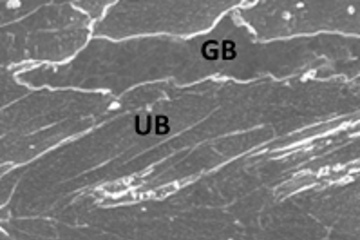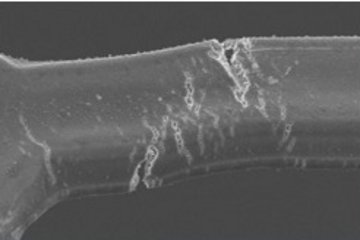All genres
881.
Journal Article
Orientation dependence of recrystallization in aluminium. Proc. ICOTOM 13, pp. 773 - 778 (2002)
882.
Journal Article
Finite element simulation of grain interaction and orientation fragmentation during plastic deformation of BCC metals. Proc. ICOTOM 13, pp. 371 - 376 (2002)
883.
Journal Article
Cellular automata in materials science with particular reference to recrystallization simulation. Annual Review of Materials Research 32, pp. 53 - 76 (2002)
884.
Journal Article
Challenges in computational materials science. Advanced Materials 14, pp. 639 - 650 (2002)
885.
Journal Article
Texture component crystal plasticity finite element method for scalable large strain anisotropy simulations. Proc. ICOTOM 13, pp. 257 - 262 (2002)
886.
Journal Article
Concepts for integrating plastic anisotropy into metal forming simulations. Advanced Engineering Materials 4, pp. 169 - 180 (2002)
887.
Journal Article
Texture component crystal plasticity finite element method for physically-based metal forming simulations including texture update. Proc. 8th Int. Conf. on Aluminium Alloys, pp. 31 - 36 (2002)
888.
Journal Article
Surface micromechanics of polymer coated aluminium sheets during plastic deformation. Advanced Engineering Materials 4, pp. 859 - 864 (2002)
889.
Journal Article
On the dependence of in-grain subdivision and deformation texture of aluminium on grain interaction. Acta Materialia 50, pp. 4379 - 4394 (2002)
890.
Journal Article
Theory of orientation gradients. (Proc. ICOTOM 13), pp. 275 - 280 (2002)
891.
Journal Article
Experimental investigation of plastic grain interaction. Materials Science and Engineering A 336, pp. 81 - 87 (2002)
892.
Journal Article
Influence of grain neighborhood on FCC texture simulation. Proc. ICOTOM 13, pp. 281 - 286 (2002)
893.
Journal Article
Micromechanical and macromechanical effects in grain scale polycrystal plasticity experimentation and simulation. Acta Materialia 49 (17), pp. 3433 - 3441 (2001)
894.
Journal Article
Optimizing continuous annealing of IF steels for improving their deep drawability. Metallurgical and Materials Transactions A 32, pp. 1989 - 1995 (2001)
895.
Journal Article
A hybrid model for mesoscopic simulation of recrystallization. Computational Materials Science 21, pp. 69 - 78 (2001)
896.
Journal Article
Introduction of a texture component crystal plasticity finite element method for anisotropy simulations. Advanced Engineering Materials 3, pp. 984 - 990 (2001)
897.
Journal Article
Work hardening in heterogeneous alloys - A microstructural approach based on three internal state variables. Acta Materialia 48 (17), pp. 4181 - 4189 (2000)
898.
Journal Article
Yield surface simulation for partially recrystallized aluminium polycrystals on the basis of spatially discrete data. Computational Materials Science 19, pp. 13 - 26 (2000)
899.
Journal Article
Coupling of a crystal plasticity finite element model with a probabilistic cellular automaton for simulating primary static recrystallization in aluminum. Modelling and Simulation in Materials Science and Engineering 8, pp. 445 - 462 (2000)
900.
Journal Article
Processing, microstructure, and properties of ternary high-strength Cu–Cr–Ag in situ composites. Material Science and Engineering A 291, pp. 186 - 197 (2000)











